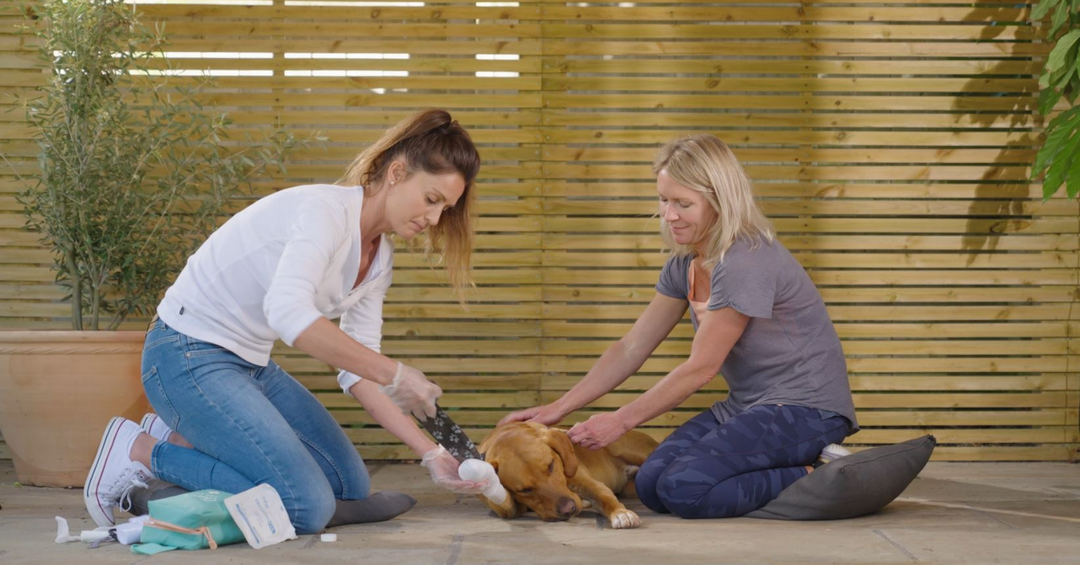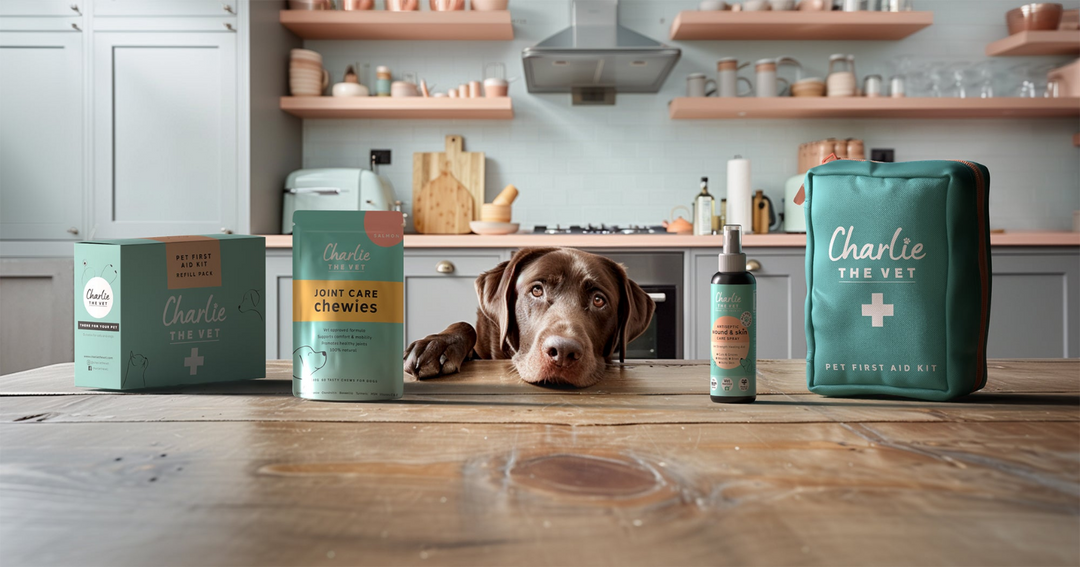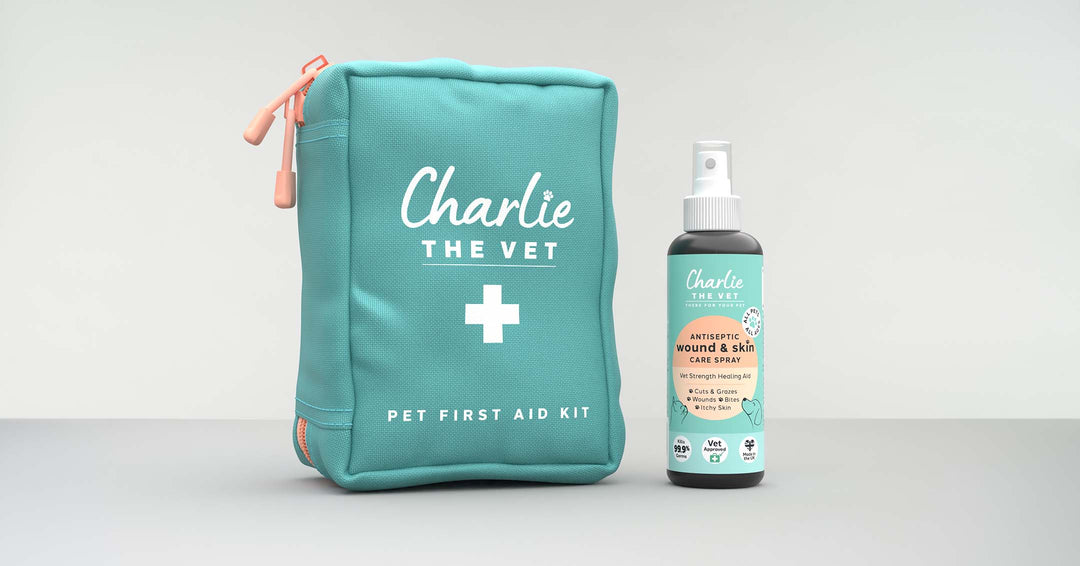Pet Collapsed (CPR)
Do they respond to you?
(talk to, or touch them)
Yes?
Great, they’re not unconscious, they don’t need CPR. You should still call your vet.
No?
Lie your pet somewhere flat and firm with their right side down and left side facing you. Check their ABCs and call your vet.
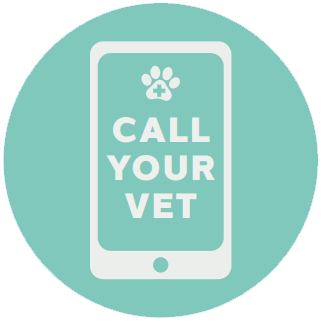
A = AIRWAYS
B = BREATHING
If you’re not sure if their chest is moving, put some hair/tissue paper/mirror in front of their nostrils. If the paper moves/the mirror steams up, they’re breathing and don't need CPR.
C = CIRCULATION
Check for a pulse by feeling over their heart (which is located on their left-hand side chest, behind their elbow), or check on the inside of their thighs for the femoral artery.
You can also find a pulse on the back of their legs half way between the toes and the ankle or wrist joint. This is worth practicing on your animal now just in case.

If not breathing
is there a pulse?
yes
Give rescue breaths only.
no
Give rescue breaths and chest compressions .
Giving RESCUE BREATHS
Extend your pet’s neck out.
Small dogs or cats
Cover both their nostrils and mouth with your mouth and give a breath.
Larger dogs
Hold their mouth closed and give breaths into nostrils only.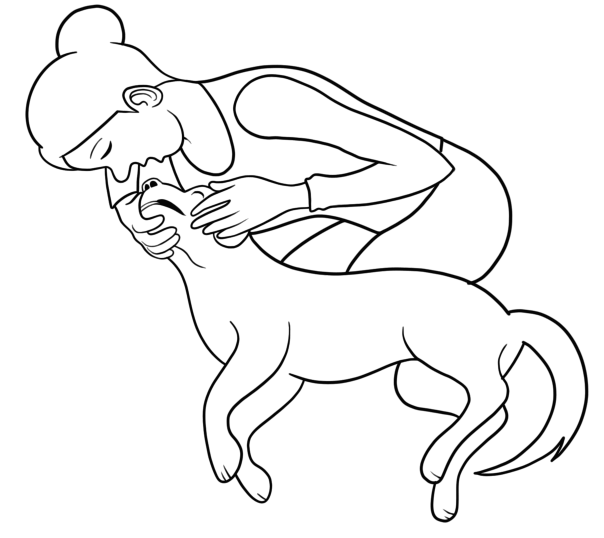
- Give 20 to 30 breaths per minute, 1 every 2 - 3 seconds.
- Check their chest rises and falls with each breath. If the chest does not rise there may be an obstruction. Perform the Heimlich manoeuvre.
- If their gums are pink your breaths are working.
Giving CHEST COMPRESSIONS
Medium to large dogs
- Kneel over your pet, keep you elbows straight.
- Using the heel of your hand over the widest part
of their chest, compress it down a third of the way
each time:
- For dogs weighing more than 15kg, use one hand on top of the other.
- For dogs weighing less than 15kg, use only one hand.
- Let their chest come back up before repeating.
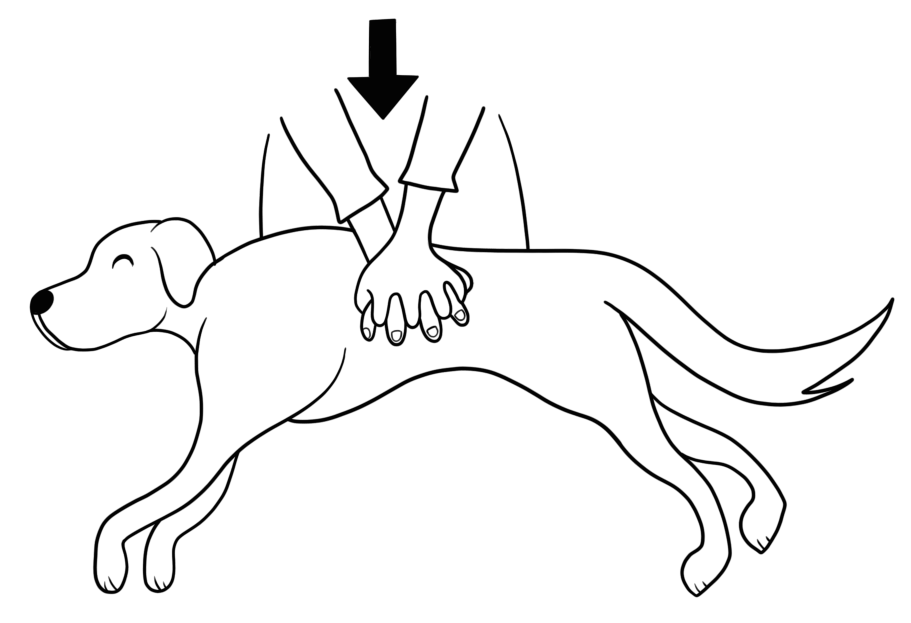
Small dogs and cats
- Place your hand directly over their heart (thumb one side of their chest, fingers the other)
- Squeeze your hand
- Give 2 compressions per second (do it to the beat of the song Stayin' Alive or Nelly The Elephant!).
- Give 2 breaths for every 30 compressions.

General Tips
- Give 2 breaths for every 30 compressions.
- Check regularly for return of pulse or breathing.
- Be prepared to stop after ten minutes if unsuccessful.
- Remember that they will get brain damage if they've not had oxygen for more than 5 minutes, sometimes less.
- CPR for animals with serious underlying health conditions e.g. heart disease is sadly often not successful but can be life saving in animals that have been choking or drowning.
- If their gums are pink your breaths are working.




